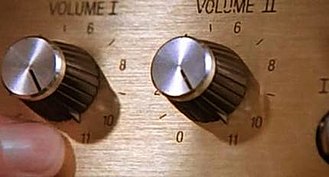Blogger Brian Hehn is the Director of The Center for Congregational Song.
Reworking hymns and music of the past
Church musicians have always used, referenced, altered, and/or been inspired by Christian artists of the past. Our current age is no different, and so a common thread in some very popular contemporary…”praise and worship”…CWM…CCM (what do YOU call it!?) songs reference some of the great hymns of the past. One popular example of this in our current song repertoire is the added refrain to “Amazing Grace” which starts with “My Chains Are Gone.” The added refrain is written by Louie Giglio (of the Passion Movement) and Chris Tomlin (probably the reason you know this song). Another well-known example of this type of congregational song is “It Is Well” by Kristene DiMarco, which is the subject of today’s blog.
These types of songs always fascinate me. I end up asking why they felt the need to add or change the hymn. An age-old question asked of every hymnal editor since the beginning of time…How does what they added, subtracted, or altered change the meaning of the hymn? Let’s look at these songs side-by-side to see what’s going on.
Here is the hymn written by Horatio Gates Spafford (1873) and found in over four-hundred hymnals so far. The video below is a lovely TTBB arrangement.
Here is the new version of the hymn that heavily references the original but is certainly an original song written by Bethel’s Kristene Elizabeth Dimarco.
Text Comparison
When Peace Like A River (It Is Well)
Horatio Gates Spafford (1873)
When peace like a river attendeth my way,
when sorrows like sea billows roll;
whatever my lot, thou hast taught me to say,
“It is well, it is well with my soul.”
Refrain:
It is well with my soul;
it is well, it is well with my soul.
Though Satan should buffet, though trials should come,
let this blest assurance control:
that Christ has regarded my helpless estate,
and has shed his own blood for my soul. Refrain
My sin oh, the bliss of this glorious thought!
my sin, not in part, but the whole,
is nailed to the cross, and I bear it no more;
praise the Lord, praise the Lord, O my soul! Refrain
O Lord, haste the day when my faith shall be sight,
the clouds be rolled back as a scroll;
the trump shall resound and the Lord shall descend;
even so, it is well with my soul. Refrain
https://hymnary.org/text/when_peace_like_a_river_attendeth_my_way
(as performed with Kristene DiMarco)
Moved by the sound of His voice
Seas that are shaken and stirred
Can be calmed and broken for my regard
My eyes are on You
Through it all, through it all
It is well
Through it all, through it all
My eyes are on You
It is well with me
Even when my eyes can’t see
And this mountain that’s in front of me
Will be thrown into the midst of the sea
My eyes are on You
Through it all, through it all
It is well
Through it all, through it all
My eyes are on You
It is well, it is well
The waves and wind still know His name
So let go my soul and trust in Him
The waves and wind still know His name
So let go my soul and trust in Him
The waves and wind still know His name
The waves and wind still know His name
It is well with my soul
It is well with my soul
It is well, it is well with my soul
It is well, it is well with my soul
It is well with my soul
It is well with my soul
It is well, it is well with my soul
It is well, it is well with my soul
It is well, it is well with my soul
My eyes are on You
Through it all, through it all
It is well, Lord
Through it all, through it all
My eyes are on You
And it is well with me
Stanza One
The opening stanza of Spafford’s hymn uses two creation-based images to describe the ups and downs of life. This is immediately followed by “whatever my lot” which alludes to God’s providence and control over all things including one’s station in life. The end of stanza 1 and the refrain then give us the basic idea of always giving praise to God by trusting in God’s love and care. This is the powerful idea that is likely why the hymn continues to be known and loved today. DiMarco’s first four lines double-down on that same idea that God is 100% in control and can (does?) move any part of creation for the sake of a single person. The refrain, while slightly different in text, does not change the essential message of Spafford’s original.
So, after the opening stanzas and refrains, the two songs are tracking well together with no substantial theological changes.
Stanza Two
In stanza two, Spafford introduces the idea that Satan is the one who creates the trials and temptations (the “sorrows like sea billows”) which need to be overcome. Indeed, Spafford goes so far as to say that we are helpless in the face of Satan’s trials and temptations. But, it is through Christ’s death that our souls are kept safe (For more on the “ransom atonement theory,” here’s a simple handout from a class at Notre Dame University). And so it is in stanza two that Christ’s saving acts are brought into play.
DiMarco’s text does not move on from stanza one, but rather moves into the responsibility of the believer. “Far be it for me to not believe | Even when my eyes can’t see | And this mountain that’s in front of me | Will be thrown into the midst of the sea” seems to be pulling ideas from John 20:29 (the story of Thomas not believing in Christ’s resurrection and Jesus responding with “Do you believe because you see me? Happy are those who don’t see and yet believe.” ) and Matthew 17:20-21 (where Jesus says, “I assure you that if you have faith the size of a mustard seed, you could say to this mountain, ‘Go from here to there,’ and it will go. There will be nothing that you can’t do.”).
So it is at stanza two that we have a departure. DiMarco moves into the importance and power of the individual’s faith while Spafford moves to the power of Christ’s salvation over the works and power of Satan. Neither of these are wrong, but they are certainly different.
Stanza Three
In stanza three Spafford doubles down on the importance of Christ’s crucifixion with “my sin…is nailed to the cross and I bear it no more” and follows it with words of praise. The focus of the text remains the work of Christ and not the work of the individual.
DiMarco’s text continues to focus on the faith of the individual by entreating the singer’s soul to “let go” and “trust in Him…The waves and wind still know His name” multiple times. This desperate plea seems to have resonances with the story in Mark 9 where the father of a demon-possessed child is told by Jesus “All things are possible for the one who has faith” to which the father cries back “I have faith; help my lack of faith!”. There’s a noticeable difference, though, in that DiMarco’s text placing the responsibility of belief on only the singer while the Gospel of Mark seems to be acknowledging the complexities of faith when we do believe…but we still need help from God to fully believe.
Stanza Four
Spafford concludes the hymn as many great hymns do, with an eye towards the coming kingdom of God. This eschatological turn using images from the Book of Revelation reminds the singer that the struggle between Satan and God, the persistence of evil and pain and suffering are not the end of the story. The final stanza ends with an acknowledgement that even though we live in a time when evil and pain and suffering do still exist, “even so, it is well with my soul.”
DiMarco does not provide a fourth stanza but rather moves into a repetition of “It is well with my soul” as somewhat of a mantra. Those familiar with meditation or the power of cyclical song forms such as those from Taize or parts of Sub-Saharan Africa understand the power that the repetition of a single phrase can have. As is common in many songs in the CWM/CCM/Praise&Worship genre, the emphasis of the song is to experience God through the making of music together rather than by the attempted explanation of God through words.
Conclusion
While the two songs share a common refrain, the trajectory of the texts and the ultimate purpose of the songs are different. Spafford’s text places the majority of the agency on the salvific works of Christ with an eschatological hopefulness. DiMarco’s text is an statement of God’s power followed by a mantra designed for the singer to manifest a belief in that powerful God. With that conclusion, my recommendation is this: do not replace one song for the other! Spafford’s hymn is a powerful text that keeps us focused on the work of Christ that was done, is still being accomplished, and will ultimately be completed. DiMarco’s song provides a powerful opportunity to sing our faith into being. If I had it my way, I’d use DiMarco’s song near the beginning of the service and use Spafford’s hymn for a sending song. If I had to choose one or the other, I’ll stick with Spafford’s consistent focus on Christ.


 So, like the guitar amp in This Is Spinal Tap, we grow accustomed to a 10, so we try to turn the next service up to 11. Hedonic adaptation tells us that this is a losing game. When every Sunday has to be a mountaintop experience, we have to keep elevating the mountain to give worshipers the same emotional experience. From what I have observed, this tends to lead to an insatiable congregation and a burnt out pastoral staff.
So, like the guitar amp in This Is Spinal Tap, we grow accustomed to a 10, so we try to turn the next service up to 11. Hedonic adaptation tells us that this is a losing game. When every Sunday has to be a mountaintop experience, we have to keep elevating the mountain to give worshipers the same emotional experience. From what I have observed, this tends to lead to an insatiable congregation and a burnt out pastoral staff. Perhaps one possible remedy to this problem of hedonic adaptation in both worship and congregational song is to use other spatial metaphors for worship. What if we are not always moving to the heights of ecstasy but also to the depths of being, not inhaling to climb higher but exhaling to sink deeper into God’s embrace? In Arthur Green’s Seek My Face: A Jewish Mystical Theology, he suggests just such a proposition for a new way of understanding spirituality:
Perhaps one possible remedy to this problem of hedonic adaptation in both worship and congregational song is to use other spatial metaphors for worship. What if we are not always moving to the heights of ecstasy but also to the depths of being, not inhaling to climb higher but exhaling to sink deeper into God’s embrace? In Arthur Green’s Seek My Face: A Jewish Mystical Theology, he suggests just such a proposition for a new way of understanding spirituality: